13.12.2022

NASA’s Lunar Flashlight, iSpace’s Hakuto R from Japan, and the United Arab Emirates’ Rashid rover are all headed to the Moon after launching aboard a SpaceX rocket.
Three international missions are now headed moonward, after a SpaceX Falcon 9 rocket lit up the early morning skies over Florida.
Liftoff occurred from Cape Canaveral Space Force Station at 2:38 a.m. EST / 7:38 UT Sunday the morning of December 11th, targeting a geostationary transfer orbit. The launch was initially delayed by a day to allow for additional pre-flight checkouts, and delayed again until this weekend. The payloads separated as planned between 46 and 53 minutes after launch. The SpaceX Falcon 9 stage one booster B1073 successfully touched down at LZ 2 back at the Cape, 7 minutes and 44 seconds after launch.
The launch carried a trio of ambitious international missions, including NASA’s Lunar Flashlight orbiter, the Hakuto R Mission 1 lander built by Japan's iSpace company, and the Rashid lunar rover fielded by the Unites Arab Emirates Space Agency. All three will take a long path, traveling to the Moon over three to four months and arriving in lunar orbit in early 2023.
"It was a beautiful launch," says John Baker (NASA/JPL) in a recent press release. "The whole team is excited to see this small spacecraft do some big science in a few months' time."
LUNAR FLASHLIGHT
First up is NASA’s Lunar Flashlight CubeSat, originally intended to ride aboard Artemis 1 last month. After arriving at the Moon, Lunar Flashlight will enter a near-rectilinear halo orbit, the same type of orbit pioneered by NASA’s CAPSTONE orbiter, which just arrived in lunar orbit on November 14th. This will take the Lunar Flashlight as close as 15 kilometers (9 miles) to the Moon's surface, and as far away as 70,000 kilometers (43,500 miles) — a loop that will allow its detectors to peer into the permanently shadowed craters at the south pole. The four laser reflectometers carried in this briefcase-sized spacecraft will then map out the distribution of the water ice on the Moon's surface.
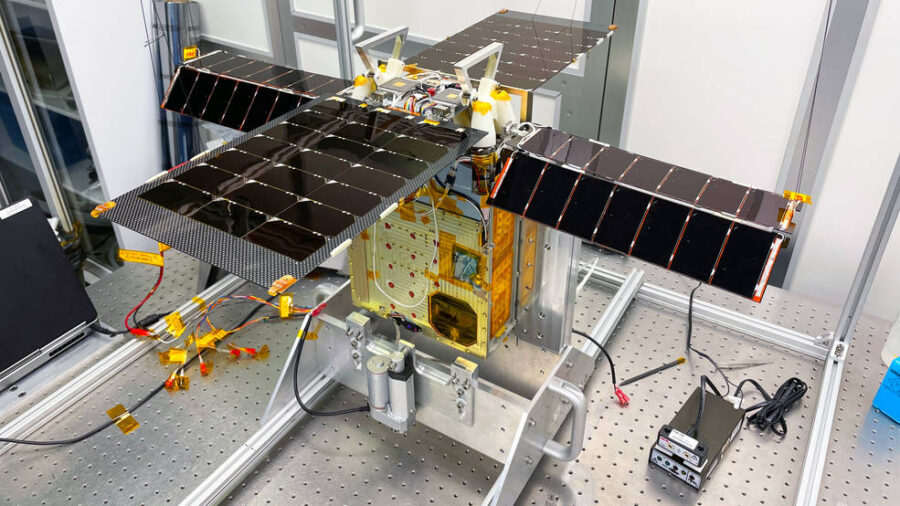
NASA / JPL-Caltech
Missions including India's Chandrayaan 1 and NASA’s LCROSS impactor have all gathered evidence for water ice on the Moon. Such deposits are thought to have been brought to the Moon by comets and could exist within the permanently shadowed cold traps that craters create on the Moon. Water ice on the Moon could prove to be a vital resource for future astronauts.
"We are brining a literal flashlight to the Moon--shining lasers into these dark craters to look for definitive signs of water ice covering the upper layer of lunar regolith," says Barbara Cohen (NASA/GSFC) in a recent press release. "I'm excited to see our mission contribute to our scientific understanding of where water ice is on the Moon and how it got to be there."
While the Lunar Flashlight team aims to map out these water ice deposits, this data might also show whether the shadows cast by uneven terrain helps water ice survive, even in the harsh daytime conditions near the Moon's equatorial regions. It's also possible this equatorial water ice, first noted in infrared data from the SOFIA airborne observatory, is instead locked up in rocks. It'll be important to future explorers to find out how accessible this water is.
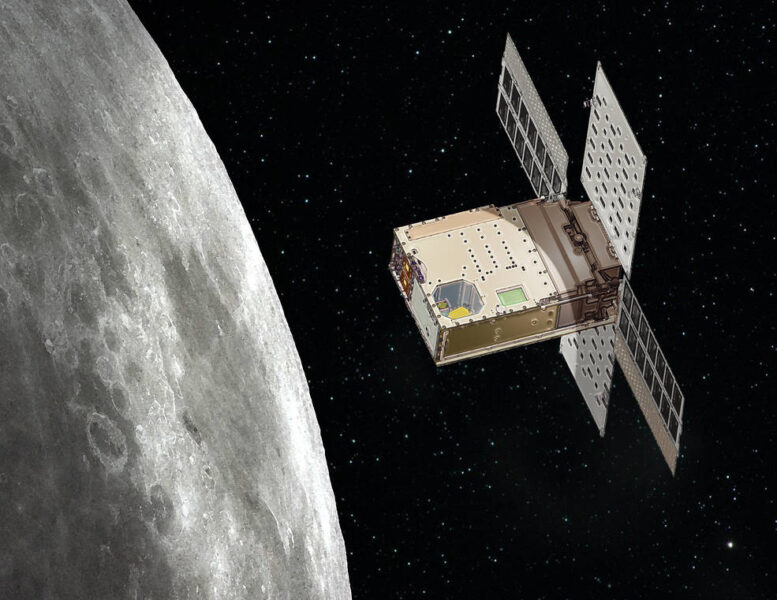
NASA/JPL Caltech
Lunar Flashlight will be the first mission to use "green" (Advanced Spacecraft Energetic non-Toxic) propellant, an alternative to hazardous hydrazine that's most often used. This fuel was first demonstrated in low-Earth orbit in 2019 on NASA's Green Propellant Infusion Mission.
The spacecraft's design also relies on previous smallsat missions, including the MARCO Mars Cube One satellites that flew to Mars with Insight.
HAKUTO R
Also on board the SpaceX launch is iSpace’s Hakuto R Mission 1, which will attempt to land in Atlas Crater near Mare Frigoris on the lunar nearside in early 2023. Hakuto means "white rabbit" in Japanese; in east Asian mythology, the animal is often associated with the Moon. The European Space Agency’s worldwide tracking network will provide support for the mission down to the lunar surface.
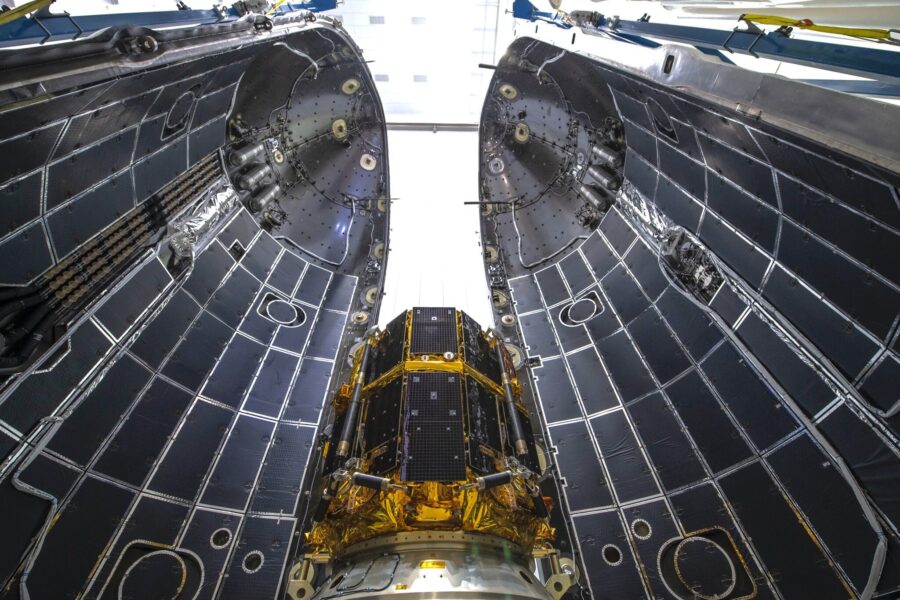
SpaceX
The mission was one the entrants to Google's Lunar X prize, a contest designed to promote private lunar exploration. Although the LunarX prize competition ended without a winner in 2018, several companies have continued with their projects. One of these, the Beresheet lander built by SpaceIL in Israel, crash-landed on the Moon in April 2019.
"iSpace's Hakuto R Mission 1 is a technical demonstration mission," says Andrew Ames (iSpace). "Once the lander is on the lunar surface, operations will take place for approximately 10 days or one lunar day (from local sunrise to sunset)."
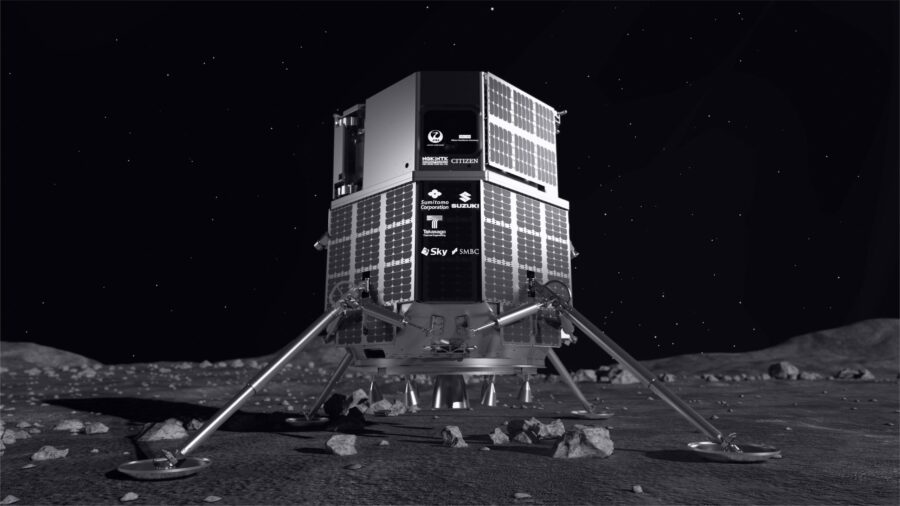
iSpace
The primary goal of Hakuto R Mission 1 is to demonstrate iSpace’s landing platform, providing momentum for future landing missions. The lander also carries a small transformer-like lunar robot "rover" that's about the size and shape of a baseball. It, too, will provide data for future missions.

JAXA / iSpace
RASHID ROVER
The Hakuto R lander will also carry the United Arab Emirates' Rashid lunar rover down to the lunar surface. The four-wheeled rover is 10 kilograms (22 pounds) and will carry a suite of cameras and a Langmuir probe, designed to measure plasma properties of surface dust.
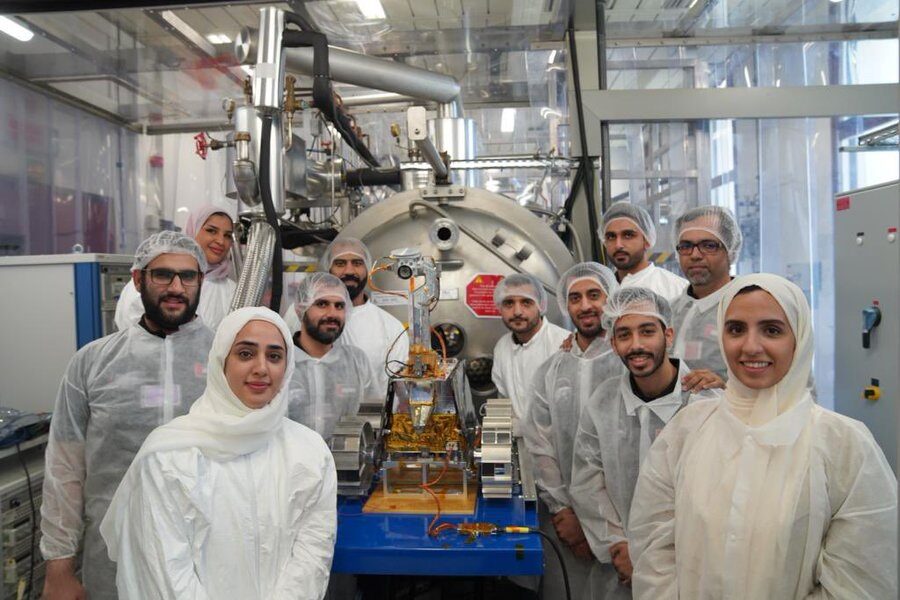
Mohammed bin Rashid Space Center
"The mission's instruments are designed to study the lunar regolith in great detail," says Dr. Dimitra Atri (NYUAD Center for Space Science). "Data from the Langmuir probe on board the rover will help understand how solar charged particles interact with the lunar regolith. Based on data from the microscopic imager, we plan to create a replica of the lunar regolith in our lab and study its properties."
Researchers on Earth already do the same based on soil data from NASA's Curiosity and Perseverance rovers, and now, scientists plan to do the same with Rashid's findings on the Moon.
If this first mission is successful, iSpace could field its second mission to the Moon as early as 2024.
More lunar missions are coming sooner than that: SpaceX is set to launch the Intuitive Machines' IM 1 lunar lander mission in early 2023. (The company's first lunar mission launch of South Korea's Danuri, will have that spacecraft in lunar orbit by mid- December.)
The Moon is once again becoming a busy place. The Artemis 1 mission has been giving us some amazing views from its vantage point in a distant lunar retrograde orbit, including a unique Earth occultation by the Moon last week, ahead of splashdown in the Pacific and return later today.
Good luck to Lunar Flashlight, Hakuto R, and Rashid, as they head outward on their long flight to the Moon.
Quelle: Sky&Telescope
